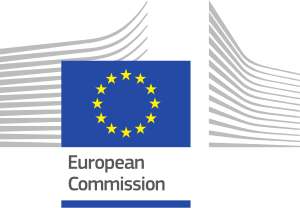Consortium Executive Board (CEB)
The Consortium Executive Board (CEB) holds representatives of each of the consortium member organisations, in total 13. These are the Full Members of the CEB. The CEB is the principal decision-making body of the EUnetHTA 21 Consortium. All decisions in relation to the fulfilment of the Service Contract will be taken by the CEB, which will be supported by committees to prepare its decision. The CEB is also supported in its activities by the Secretariat.
Roles and members
Role of the Consortium Executive Board
- The CEB decides on strategic activities to ensure a consistent approach between all activities and for all contractual matters of the EUnetHTA 21 Consortium;
- Maintains oversight on deliverables and milestones and their timely processing as presented by the CSCQ;
- Approves high-level strategic communication with stakeholders;
- Actively assesses risks and decides on mitigation strategies;
- Actively ensures that committees are sufficiently supported;
- Votes in the Elected Members of the Board;
- Identifies and assesses relevant topics for discussion;
- Endorses the work of the CSCQ to provide final approval for all deliverables arising under the Service Contract;
- Takes into account the outputs of the Heads of Agencies Group (HAG) and other high-level stakeholder networks;
- The CSCQ is the primary decision-making body in relation to technical discussions. However, if mediation on divergent opinions fails, the CEB may intervene and has the final decision.
- Its members act as ambassadors of the EUnetHTA 21 Consortium (including both Full and Elected Members), focussing on increasing the dissemination of developments under the Service Contract and facilitating buy-in across the HTA community.
Throughout its role, the CEB is guided by the EU HTA Regulation (COM/2018/051 final – 2018/018 (COD)) and its delegated acts (as to be published in the Official Journal of the European Union).
Full Members of the Consortium Executive Board
Each consortium member organisation nominates one representative to the CEB. Each CEB member holds one vote in the CEB. Full Members are responsible for ensuring that the CEB fulfils its role and duties.
Observers
Representatives from the European Commission and HADEA are invited to participate as observers in the CEB. They have no voting rights.
Current membership
As of November 2021, the following individuals are members of the CEB:
Table 1 Full membership of the Consortium Executive Board
|
Role |
Full name |
Organisation |
Country |
|
Full Member |
Sonia Garcia Perez |
AEMPS |
Spain |
|
Full Member |
Giovanni Polimeni |
AIFA |
Italy |
|
Full Member |
Claudia Wild |
AIHTA |
Austria |
|
Full Member |
Antje Behring |
GBA |
Germany |
|
Vice-Chair |
Chantal Bélorgey |
HAS |
France |
|
Full Member |
Sara Couto |
INFARMED |
Portugal |
|
Vice-Chair |
Alric Ruether |
IQWIG |
Germany |
|
Full Member |
Marijke Eyssen |
KCE |
Belgium |
|
Full Member |
Roisin Adams |
NCPE |
Ireland |
|
Full Member |
Gergő Merész |
NIPN |
Hungary |
|
Full Member |
Karen Marie Ulshagen |
NOMA |
Norway |
|
Chair |
Niklas Hedberg |
TLV |
Sweden |
|
Full Member |
Marcus Guardian |
ZIN |
The Netherlands |
Chair and Vice-Chairs
The Chair of the CEB will lead the meetings of the group. The Chair is supported by two elected Vice-Chairs. The Chair and Vice-Chairs discuss and decide upon the agendas of the meetings, engage with members in preparation of meetings, engage with the committees, the Secretariat, and the various hands-on groups. The Chair and Vice-Chairs are supported in all their activities by the EUnetHTA Secretariat.
Role of the Chair of the Consortium Executive Board
- The Chair develops the strategic direction of EUnetHTA 21 with the Board and, in close cooperation with the Secretariat and the Vice-Chairs, contributes and oversees its implementation;
- Acts as an ambassador of the CEB and EUnetHTA 21 and advocates its mission to internal and external stakeholders;
- Provides advice and counsel to the Secretariat;
- In concert with the Vice-Chairs and the Secretariat, develops and sets the agendas for meetings of the Board;
- Acts as Chair at meetings of the Board;
- Reviews minutes of Board meetings;
- Participates in other committees and working groups of the Board where appropriate or requested by the Board;
- Ensures the Board has approved policies to help implement sound and compliant governance, and quality and risk management;
- In concert with the Secretariat and the Vice-Chairs, helps ensure the Board’s directives, policies and resolutions are carried out;
- Assesses the performance of the Board and the various committees;
- Coordinates activities with the Chairs of the CSCQ and COI Committees;
- Coordinates activities with the Vice-Chairs.
Role of the Vice-Chairs of the Consortium Executive Board
The Vice-Chairs support the Chair in all his or her tasks;
The Vice-Chairs can act in place of the Chair, in situations where the Chair is not available. This should take place on an alternating basis depending on availability (facilitated by the Secretariat);
In concert with the Chair and the Secretariat, the Vice-Chairs develop and set the agendas for meetings of the Board.
Current appointments
As of July 2021, the following individuals have been appointed as Chairs and Vice-Chairs of the Consortium Executive Board:
Table 2 Chairs and Vice-Chairs of the Consortium Executive Board
|
Role |
Full name |
Organisation |
Country |
|
Chair |
Niklas Hedberg |
TLV |
Sweden |
|
Vice-Chair |
Chantal Bélorgey |
HAS |
France |
|
Vice-Chair |
Alric Ruether |
IQWIG |
Germany |

